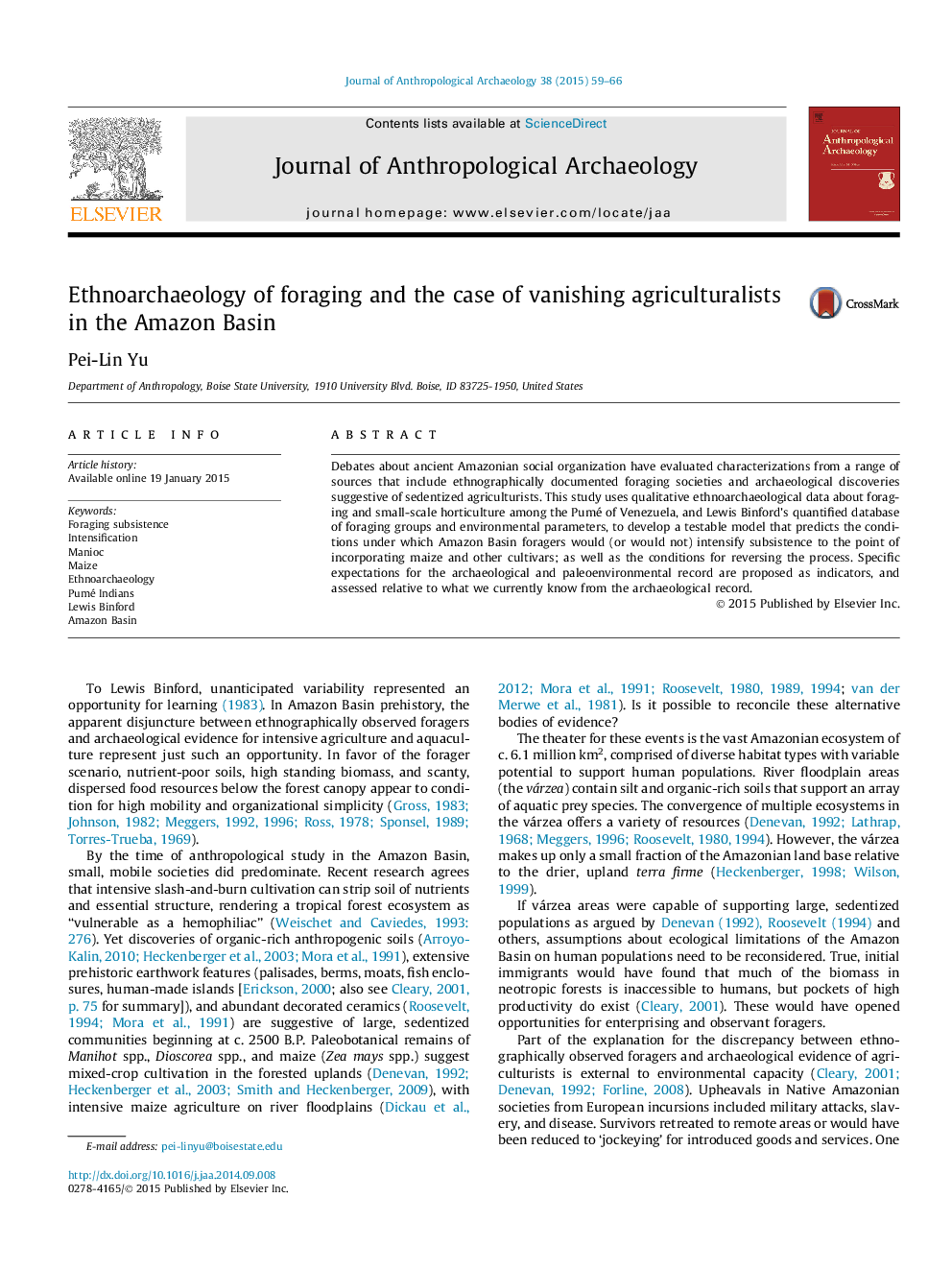| Article ID | Journal | Published Year | Pages | File Type |
|---|---|---|---|---|
| 1034911 | Journal of Anthropological Archaeology | 2015 | 8 Pages |
Debates about ancient Amazonian social organization have evaluated characterizations from a range of sources that include ethnographically documented foraging societies and archaeological discoveries suggestive of sedentized agriculturists. This study uses qualitative ethnoarchaeological data about foraging and small-scale horticulture among the Pumé of Venezuela, and Lewis Binford’s quantified database of foraging groups and environmental parameters, to develop a testable model that predicts the conditions under which Amazon Basin foragers would (or would not) intensify subsistence to the point of incorporating maize and other cultivars; as well as the conditions for reversing the process. Specific expectations for the archaeological and paleoenvironmental record are proposed as indicators, and assessed relative to what we currently know from the archaeological record.
